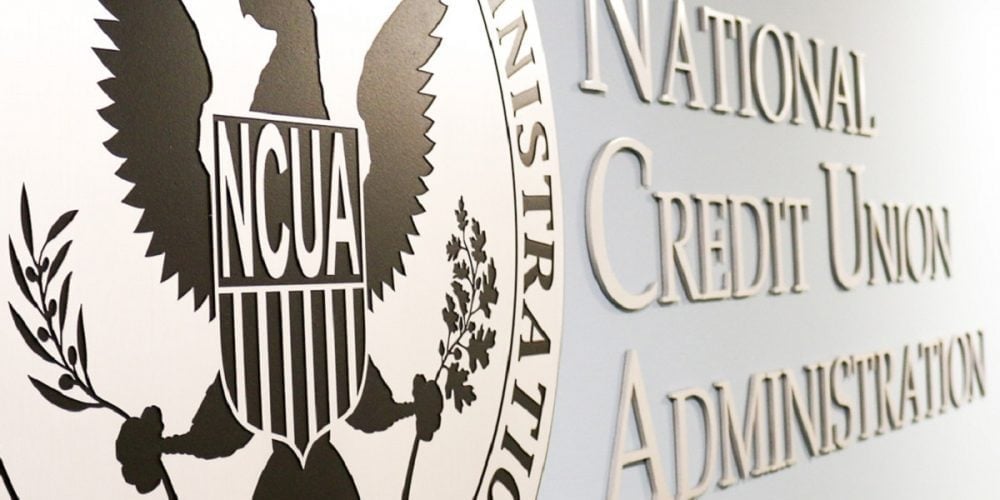On September 16, 2019, in a Supervisory Letter to “All Field Staff,” the National Credit Union Administration (NCUA) published new guidance for evaluating secondary capital plans. A separate Supervisory Letter from Chairman Rodney Hood and addressed to the Board of Directors and Chief Executive Officer of each federally insured credit union accompanied the release. Across an impressive twenty-three (23) pages, and in thorough detail, the guidance “updates the framework the NCUA uses to analyze and approve or deny secondary capital plans” and outlines the criteria and procedures by which the agency will continue to consider secondary capital plans submitted by low income designated credit unions (LICUs). A copy of the Supervisory Letter is available on the NCUA website here.
Since 1996, LICUs have been permitted to accept uninsured secondary capital from institutional investors. In 2015, the NCUA amended its Supervisory Manual to streamline the application process in an attempt to make secondary capital easier for investment. Today, more than two decades after its secondary capital vision was first implemented, the NCUA concedes that its success “has been mixed.” And, the program’s reach has, undoubtedly, been less than many had hoped. In fact, the number of credit unions taking advantage of secondary capital has steadily shrunk from an all-time high of 80, in 2012, to today’s 68. This week’s guidance seems aimed at addressing much of the mystery that has shrouded the secondary capital application process in recent years. Against that backdrop, we accept the policy statement articulated in Chairman Hood’s letter:
“Many LICUs have a record of prudently using secondary capital to increase regulatory capital levels to protect against future losses and serve as a foundation for strategic initiatives and growth. Secondary capital accounts have served as a valuable resource to some LICUs, enabling them to provide much needed lending and other member services to underserved communities.”
Before evaluating the NCUA’s guidance, we caution, as the NCUA does, that “[e]ach secondary capital plan is unique to the applicant LICU, and the evaluation of secondary capital plans is a fact-specific engagement that varies based on the unique characteristics of each LICU.” Nonetheless, the Supervisory Letter is a welcomed development to the secondary capital landscape. And, based on Olden Lane’s review, the guidance reflects standards that have been in place for some time – but have not been clearly and comprehensively articulated in public materials until now.We are hopeful that this publication will improve the application process, reduce the number of denials and alleviate frustrations that have been felt by many.We applaud the NCUA for its publication of this material which we regard as the most significant development in secondary capital since 2015.
The Supervisory Letter provides a framework for those LICUs already involved in the secondary capital process or seeking to better understand what the process entails. It also answers some of the recent arguments of naysayers who have complained that the agency is somehow engaged in a process of systematic denial or not interested in allowing LICUs to access this form of regulatory relief. At Olden Lane, we have long thought that such critiques are more the product of excuse making than any accurate reflection of reality. Nonetheless, with this thorough guidance, the expectations are now front and center and in granular detail for any LICU interested in successfully navigating the process.
After summarizing the legislative and regulatory background of the current secondary capital regime, the Supervisory Letter outlines the express requirements of Section 701.34. The section provides that before offering secondary capital, a LICU must adopt and forward to the NCUA for approval a written secondary capital plan that, at a minimum:
- States the maximum aggregate amount of uninsured secondary capital the LICU plans to issue,
- Identifies the purpose for which the aggregate secondary capital will be used, and how it will be repaid,
- Explains how the LICU will provide for liquidity to repay secondary capital upon maturity of the accounts,
- Demonstrates that the planned uses of secondary capital conform to the LICU's strategic plan, business plan, and budget, and
- Includes supporting pro forma financial statements, including any off-balance sheet items, covering a minimum of the next two years.
Those who follow this market closely will pay particular attention to the discussion that follows this part of the Supervisory Letter. Here, the agency offers its rebuttal to the recent criticism that “credit unions have had a ‘zero batting average’ for secondary capital plan appeals to the Supervisory Review Committee (SRC) of NCUA during the first seven months of 2019.” The NCUA restates its long-held position that 701.34’s requirements represent only the “minimum information a LICU must include in a secondary capital plan,” because “the safety and soundness principles on which the NCUA’s analysis is grounded” are “implicit in the minimum requirements.”
At Olden Lane, we are generally simpatico with this position. To insist otherwise is (1) to apply an overly mechanical reading to the regulation, (2) frustrating to the congressionally mandated purpose of the NCUA to ensure the safety and soundness of insured credit unions, and (3) inconsistent with the desire of the 2006 amendments which expressly granted approval authority to the Regional Directors. As the Supervisory Review Committee observed at the most recent appeal, “[w]hen we consider the examples of lenient practices and the Board’s stated objectives for the revised rule, it is clear the Board’s intent was for regional directors to consider safety and soundness in the review and critique of secondary capital plans.” We do caution, however, that just as an overly technical reading of the 701.34 requirements could lead to absurd results, so too could a reading of the provisions that provides the Regional Directors with unlimited laxity in denying approvals. And so, if nothing else, the Supervisory Letter represents an important contribution to eliminating any arbitrary reasons for withholding approvals.
The guidance proceeds to identify “[s]pecific examples of reasons a LICU might use secondary capital” as part of its overall strategy. These include (1) enhancing earnings, (2) restoring regulatory capital to a minimum desired level, and (3) increasing regulatory capital to a desired level based on risk or to support future growth or other member service initiatives. With respect to each of these identified reasons for secondary capital, the Supervisory Letter highlights the general parameters of how the agency would scrutinize a plan to determine whether the requested secondary capital compromises the requesting LICU’s safety and soundness.
Here, the new guidance describes a host of requirements not explicit in the secondary capital regulations included in NCUA Rule 701.34. By now, many of these hurdles are recognizable to LICUs that have submitted plans. These include:
- Analysis and consideration of a range of plausible assumptions (optimistic and pessimistic) for both growth and portfolio performance metrics;
- Scenario analysis addressing various risk assessments and forecasts;
- Liquidity assessments under pessimistic scenarios; and
- Modeling the risk characteristics of increased borrowings and/or adding higher risk loans and investments to portfolios (if relied on in the secondary capital plan) adequately for credit, liquidity, and interest rate risk purposes.
The Supervisory Letter is filled with additional detail and nuance with respect to a whole host of issues that have heretofore played out only in the back and forth of individual plan submissions. For example, there is clarification on such items as:
- the level of detail required on off-balance sheet items;
- the appropriate use of third party vendors in the preparation of a plan;
- the sliding scale of review depending on a plan’s complexity;
- the technicalities of the procedures and timeframes for state-chartered LICUs seeking secondary capital; and
- the additional scrutiny that will accompany a levered growth strategy.
Finally, the Supervisory Letter makes clear that, as part of its review process, the NCUA will examine an applicant LICU’s (1) due diligence process, (2) financial condition, (3) operation condition and (4) risk management processes and board oversight. Quite properly, the agency views each of these as integral to the success of any secondary capital plan. Likewise, we continue to caution clients that secondary capital is anything but simple. In our experience, successful secondary capital plans (1) incorporate secondary capital as part of the credit union’s broader overall strategy, and (2) are the product of thorough preparation and a deliberate, ongoing and thoughtful process.
In our view, the Supervisory Letter is a significant contribution toward ensuring that the NCUA and credit union’s themselves are better prepared to separate good secondary capital plans from bad. As such, we applaud the agency for its work. And, we caution all involved in the process that these consistent, logical and thoughtful rules are the first step. Now, it is up to the LICU applicants to heed them and the NCUA to apply them consistently.







